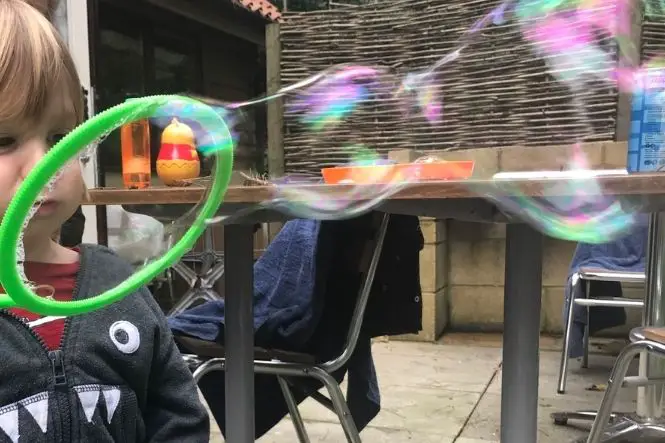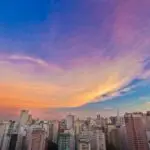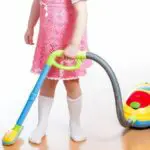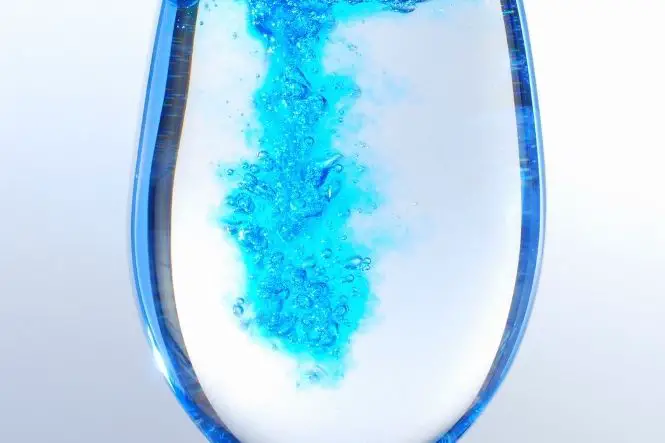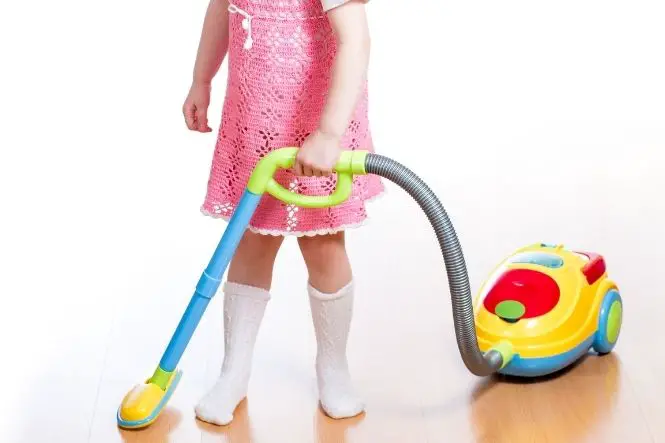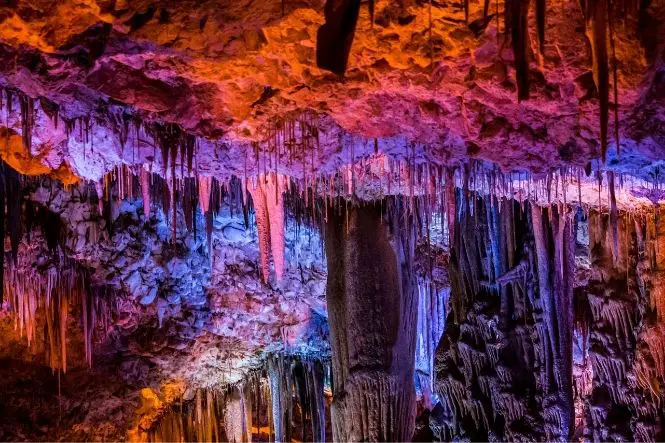Whether they are in a bubble bath or drifting on the wind, bubbles are beautiful and fun things. Try making your own to examine the amazing properties of the simple bubble.
Making Bubbles
To make bubbles, you need a bubble solution and a wand. A basic bubble solution is water with soap or detergent such as washing-up liquid or bubble bath in it (try one part washing up liquid or bubble bath to ten or fifteen parts water). To make bubbles for babies, try using baby shampoo, as these will not sting their eyes. Try out different mixtures – does washing-up liquid, bubble bath or baby shampoo make the best bubbles? What strength is best? Does the price or brand matter? What happens if glycerine is added to the mixture?
To make small bubble wands, use pipe cleaners and make a small loop with a handle. Dip the loop into the bubble solution to form a ‘skin’ of bubble solution across the frame, and blow – what difference does blowing gently or blowing hard make? Try other things with holes in, such as slotted spoons. For huge bubbles, make the bubble wand from a wire coat hanger – wrapping it with fabric will allow more bubble solution to soak in – and wave it through the air.
Put some bubble solution into a shallow bowl, put a straw into the solution with one end just under the surface, and blow gently into it to make bubbles. What shapes do the bubbles make? What happens when bubbles meet? Do they stay round? To make bubble prints, add powder paint or other water-based paint to the bubble solution and carefully touch a piece of plain white paper to the surface of the bubbles. Try not to get the paint mixture on skin or clothes.
How Do Bubbles Work?
The bubble ‘skin’ is made up of three layers – two layers of soap, sandwiching a layer of water. Detergent molecules have a head that likes water (hydrophilic) and a tail that hates water (hydrophobic). The heads of the detergent molecules bury themselves in the water layer. As the water evaporates, the bubble skin gets thinner and the bubble bursts.
Adding glycerine makes the detergent layers thicker, so making the bubble stronger, and stops the water in between from evaporating, so that the bubble lasts longer.
Bubbles on their own are round because they are always pulled into a sphere by surface tension, as this shape is the easiest to be because it has the smallest surface area. When two bubbles meet, they end up sharing a wall, because this also makes the surface area as small as possible. If the bubbles are a similar size, the shared wall is flat. If one bubble is smaller than the other is, the smaller one will make a bulge in the larger one. If there are lots of bubbles together, they form hexagonal shapes like cells in a honeycomb, because this is the most efficient way of filling a space.
What Use Are Bubbles?
Foams are made of tiny bubbles – they make mousses and soufflés light, and help shaving foams spread over the skin. Foams made out of metal or plastic are strong but light, so are useful in aeroplanes and cars.

